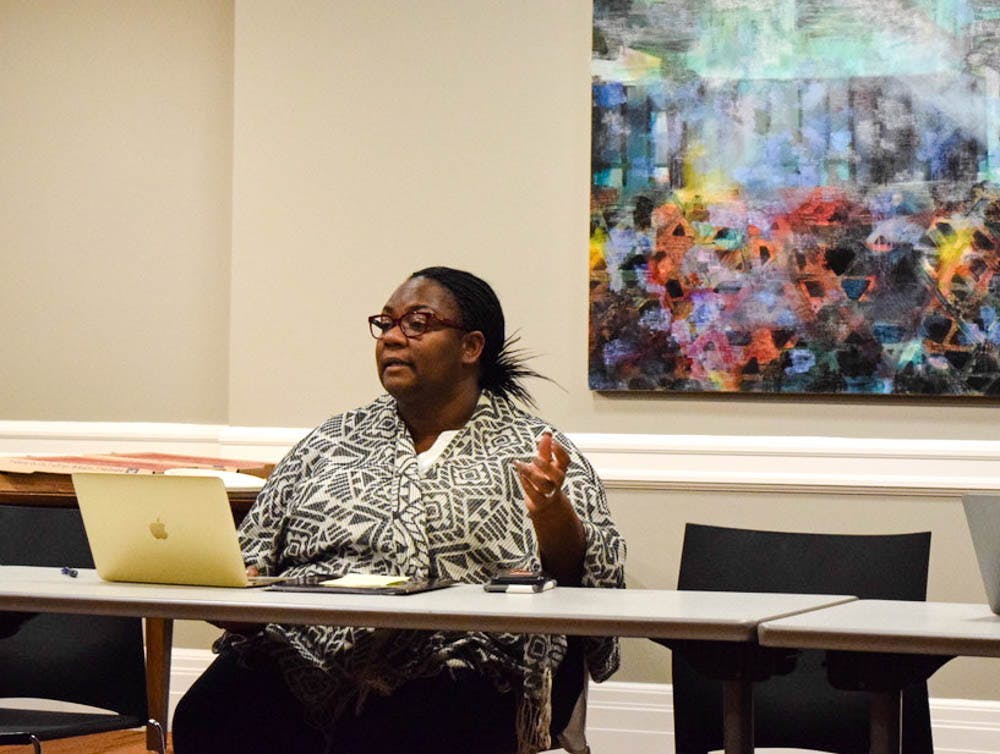During its first general body meeting of the semester Wednesday evening, The Undergraduate Council of Students heard updates from Vice President for Institutional Equity and Diversity Shontay Delalue about a new bias incident reporting system her office hopes to launch by mid-February.
Delalue explained the purpose and goals of the new system, which the Council discussed most recently at a general body meeting in November, The Herald previously reported. “A part of what we hope to get from this process is pattern data,” Delalue said. “For the purposes of the climate at Brown, (pattern data is) really important.”
The new system’s goals include “helping the community and helping (the OIED),” Delalue said. “If we don’t have any sense of the pattern (of incidences), it’s harder for us to pinpoint how we can deploy resources.”
The development of the new bias reporting form is now in its final stages, she added. UCS members began working with the OIED, alongside other students, to develop the new system in fall 2017, according to a June 1 email to the general body from former UCS President Chelse-Amoy Steele ’18.
“It’s critically important that … anything that is for the community should be by the community,” Delalue said. “So we want to be sure that we are hearing the voices of the people who are using the form. We’ve used input from the community to inform our practice.”
Under the new system, individuals will be able to submit a report and request to have it looked over by a review team comprised of faculty, staff and students. The review team, headed by Director of Institutional Equity and Community Engagement Shay Collins, will share resources with the complainant and invite them to discuss the report. They will also determine which University offices to consult to reach a resolution.
“Our goal is to get the person connected to the right place as soon as possible,” Delalue said. Individuals will also be able to indicate that they do not wish for the report to be reviewed by the team, she added.
The Diversity and Inclusion Action Plan also emerged as a point of discussion. The plan released in February 2016 “aims to increase representation of historically underrepresented groups on campus, strengthen research and teaching on diversity and inclusion issues and improve campus life,” The Herald previously reported.
Every year, the OIED requires every academic department to submit a report outlining their progress in implementing the goals of the DIAP. The OIED will develop a standard rubric that department heads can use to “chart their progress,” Delalue said.
Specific aspects of the DIAP drove discussion during the question and answer segment of the meeting.
UCS Secretary Vanessa Garcia ’20.5 noted that the DIAP “mentions … ethnicity and gender, but, notably for me, it didn’t mention anything about ability.” Garcia asked Delalue what else the OIED is “thinking about in terms of ability bias.”
In response, Delalue acknowledged that the specific language of the DIAP may not explicitly include ability, but emphasized the role of the DIAP as “one guide, among many.”
All in all, the OIED’s “work is making sure that through the existing infrastructure, we are attending to the different identity groups, particularly around bias. So that’s why our conversations with the bias incident system, is not to one particular identity marker,” she said.
Delalue also discussed the impacts of the proposed changes to university Title IX processes released by the federal government in November. As the University’s own processes change in response to the regulations, “we are going to stay committed … even as the federal government has its various changes in the ways in which it impacts institutions.”
In this regard, Delalue emphasized the importance of community members filling out the Association of American Universities’ Campus Climate Survey on Sexual Assault and Sexual Misconduct later this semester to help understand what specifically is happening on campus in comparison with other institutions.
The OIED’s organizational and structural changes were also a topic of discussion, as Delalue explained the OIED’s hiring of more staffers since she assumed her role in Dec. 2017.
“It just signals again to the community that the institution takes diversity, inclusion and equity very seriously,” she said.
New positions include the Director of Institutional Equity and Community Engagement, who works on the bias incident reporting system as a liaison to the campus community, and a Title IX Administrative Coordinator, Delalue said.
The Office is also working on acknowledging the intersections of diversity, inclusion and equity by increasing collaboration through its various divisions “because we realized there’s places where they overlap, and there are also places where they diverge,” Delalue said. “So we are building that work … and we will eventually communicate that out to the institution around where these places come together.”





